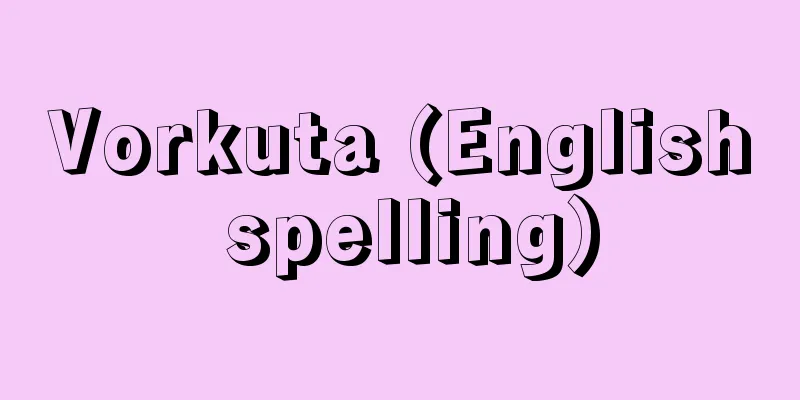Acala - Fudo Myoo

|
Another name for the Hindu god Shiva, Acalanata, is pronounced Asharanouta in Chinese. Achara means immovable deity. It is a statue that is said to have been incarnated into a wrathful form by the command of Dainichi Nyorai, and in esoteric Buddhism, it serves ascetics, awakens the bodhi mind, drives away evil, and protects all living beings. It is the main deity located in the center of the Five Great Wisdom Kings and Eight Great Wisdom Kings. According to the 9th volume of the Fukukensakujinbenshingonkyo (Amida Buddha), translated by Bodhiruci in 709 (the third year of the Jinglong era in China), Achara was first described as an immovable messenger holding a sword in his right hand and a rope in his left hand. However, the prototype for the iconography comes from a passage in the Mahavairocana Sutra translated by Shanwuwei in 725 (Kaigen 13): "The messenger of Acala Buddha carries a wisdom sword and a lasso, his topknot hangs over his left shoulder, he sees clearly with a single glance, and his wrathful body is filled with fierce flames. He resides peacefully on a rock, has the appearance of water waves on his forehead, and is sometimes in the form of a full-bodied boy." Statues of Acala were introduced to Japan by Kukai in the early 9th century, but it was after Enchin that faith in Acala became popular. Enchin himself had an insight into the Yellow Acala, also known as the Golden Man, and also brought the image with him. The image of Acala expresses the state of being in Kasho-Zanmai (a state of burning fire), and his posture expresses immobility, as he has destroyed all sins and is unshakable. Most of the images are in the form of a triad with Acala at the center and the children Kongara and Seitaka as attendants, and the majority of both seated and standing statues have one face and two arms. There are also images of other shapes, such as one face and four arms (Zuzo-Sho, Kakuzen-Sho, etc.). Regarding the form, Jun'yu (890-953) in his book Yoson Dojo-Kan (Yoson Dojo-Kan) argues that the statue of Acala expresses the nineteen contemplations (also called the nineteen contemplations). (1) An incarnation of Dainichi Nyorai. (2) In the mantra there are the four characters a, ro, hām, and mam. (3) He resides in the state of fire-birth samadhi. (4) He has the appearance of a boy and is obese. (5) He has a seven-tailed topknot on his head. (6) He has a pigtail on his left side. (7) He has wrinkles on his forehead. (8) He has his left eye closed and his right eye open. (9) His lower teeth bite the upper right lip, and his lower left lip turns outward. (10) He has his mouth closed. (11) He holds a sword in his right hand. (12) He holds a rope in his left hand. (13) He eats the remains of a wanderer's food. (14) He sits on a large rock. (15) He has an ugly complexion and is blue-black in color. (16) He is furious and angry. (17) There is a Garuda flame on his body. (18) He transforms into Kurikara, who circles a sword. (19) He transforms into two children who serve ascetics. The first is called Kongara and the second is called Sethaka. The Nineteen Contemplations are said to have been created based on the Mahavairocana Sutra and its commentaries. The image of Acala changed in the Kamakura period, and the whole body became dynamic, such as the Shinkai-style image of a statue resting on a rock with a sword, or the running Acala image of a statue shouldering a sword. In the Daishi Yorai-style image of a wrathful figure, both eyes are wide open and the two fangs protrude upwards or downwards (in the same direction), and this image is preserved in sculptures and paintings. However, as time went on, the image was often depicted with eyes half-open (so-called squint). Acala's treasured sword was attached to Kurikararyu-o, and there is a theory in the Kurikararyu-o Sutra (included in the Taisho Tripitaka, Volume 21), and an image from the Heian period has been preserved at Ishiyama-dera Temple. The Myo-o uses the power of merit (kudoku) he prays to control the dragon, and the dragon's incarnation is in the Sammaya form. Famous examples include the three great Fudo images of Blue Fudo (Shoren-in Temple, National Treasure), Yellow Fudo (Onjo-ji Temple, National Treasure), and Red Fudo (Myouo-in Temple, Koyasan, National Important Cultural Property). Naritasan Fudo, Meguro Fudo, and other statues are in circulation throughout the country as the principal image of Fudo-ho (rituals for health and profits) and as a safeguard for praying for the peace of the nation. As for sculptures, the wooden structures of the lecture hall and Miei-do hall of Kyoogokoku-ji Temple (Toji Temple) are among the oldest. The wood carvings at Shochi-in Temple in Koyasan are known for their seated figures with a rich sense of volume, and Namikiri Fudo in the Southern Temple is famous as a statue that is said to have protected Kukai when he returned to Japan. There are many masterpieces from the Kamakura period, and a masterpiece by Kaikei is in Daigo-ji Temple. In addition, there are the Ninnokyo Mandala and the Anchin Mandala, which place Acala as the central figure, and in the Sonsho and Miroku Mandalas, he is depicted at the bottom. The Acala Eight Great Children, who are accompanied by the Eight Great Children as attendants, are also preserved at Mount Koya (Kongobu-ji Temple). [Toshiaki Manabe] "Acala by Teruhiro Watanabe (1975, Asahi Shimbun)" Source: Shogakukan Encyclopedia Nipponica About Encyclopedia Nipponica Information | Legend |
|
ヒンドゥー教のシバ神の異名で、アチャラナータAcalanātaといい、漢音で阿遮羅嚢他(あしゃらのうた)とあてる。アチャラは無動尊の意。大日如来(だいにちにょらい)の命を受けて忿怒(ふんぬ)相に化身(けしん)したとされる像で、密教では行者に給仕して菩提(ぼだい)心をおこさせ悪を降(くだ)し、衆生(しゅじょう)を守る。五大明王、八大明王では中央に位置する主尊。709年(中国の景竜3)に訳出された菩提流支(ぼだいるし)訳『不空羂索神変真言経(ふくうけんさくじんべんしんごんきょう)』第9巻によると、右手に剣を持ち、左手に索(縄)を持つ不動使者としての所説を初出とする。しかし図像化の原型となったものは、725年(開元13)の善無畏(ぜんむい)訳『大日経(だいにちきょう)』の所説「不動如来使者は慧刀(えとう)、羂索を持ち、頂髪が左肩に垂れ、〔目は〕一目(いちもく)にして明らかに見、威怒身(いぬしん)で猛炎あり。磐石(ばんじゃく)上に安住し、額に水波の相があり、充満した童子形もある」による。不動明王像は9世紀初め空海によりわが国に伝えられたが、不動信仰が盛んになったのは円珍(えんちん)以降である。円珍自身も金人(きんじん)といわれる黄不動を感得し、また図像も請来(しょうらい)した。不動明王の図像は火生三昧(かしょうざんまい)(火の燃えるような境地)に入った状態を表現したもので、いっさいの罪障を摧破(さいは)し、動揺しないので、姿勢は不動を表す。不動明王を中心に矜迦羅(こんがら)・制吒迦(せいたか)童子を脇侍(わきじ)に配した三尊形式が多く、坐像(ざぞう)・立像とも一面二臂(にひ)像が主流。一面四臂像などの異形も図像(『図像抄』『覚禅(かくぜん)抄』など)として伝わっている。形像については、淳祐(しゅんにゅう)(890―953)の著『要尊道場観』によると、不動明王像には、十九観(十九想観ともいう)が表現されていると説く。(1)大日如来の化身。(2)明(みょう)(真言)のなかにアa、ロro、ハームhām、マームmāmの四字がある。(3)火生三昧に住する。(4)童子形で肥満。(5)頂に七莎髻(しちしゃけい)がある。(6)左に弁髪(べんぱつ)あり。(7)額に皺文(しゅうもん)あり。(8)左目を閉じ、右目を開く。(9)下歯、上の右唇を噛(か)み、下の左唇、外に翻じて生ずる。(10)その口を閉じる。(11)右手に剣をとる。(12)左手に索を持つ。(13)行人の残食を喫す。(14)大磐石に坐(ざ)す。(15)色醜くして青黒い。(16)奮迅忿怒する。(17)遍身に迦楼羅(かるら)炎がある。(18)変じて倶利迦羅(くりから)となり、剣を繞(めぐ)る。(19)変じて二童子となり、行人に給仕する。一を矜迦(こんが)羅、二を制吒迦という。十九観は『大日経』と『大日経疏(しょ)』によってつくられたという。 不動明王図像の変容は、鎌倉時代になると、信海(しんかい)様とよぶ剣をついて岩に休止する像や、走り不動のように剣を担ぐ像など全身が動的になる。忿怒の表現では、大師請来様では両眼を見開き、二牙を上あるいは下に(同方向に)突出するが、その図像が彫刻・絵画でも守られている。しかし時代が下ると、半眼半開(いわゆるすが目斜視)が多くなる。不動明王の宝剣は倶利迦羅竜(くりからりゅう)王がまとい付いたもので、『倶利迦羅竜王経』(『大正蔵経』所収、第21巻)に所説があり、石山寺に平安期の図像が伝存している。明王が念じる功徳(くどく)力により竜を駆使し、またその化身として三昧耶形である。 作例では三大不動の画像として青不動(青蓮(しょうれん)院、国宝)、黄不動(園城(おんじょう)寺、国宝)、赤不動(高野山(こうやさん)明王(みょうおう)院、国重文)が有名。不動法(息災・増益の修法)の本尊、また国家の安泰を祈る安鎮法として、成田山不動、目黒不動など全国に流布している。彫刻では教王護国寺(東寺)講堂、御影(みえい)堂の木造が最古の部類に属する。高野山の正智(しょうち)院の木彫は豊かな量感のある坐像として知られ、また南院の波切(なみきり)不動は空海帰朝の際守護したと伝える像として有名。鎌倉期に傑作が多く、快慶作の逸品が醍醐(だいご)寺にある。また不動明王を中尊に配置する仁王経曼荼羅(にんのうきょうまんだら)、安鎮曼荼羅があり、尊勝・弥勒(みろく)曼荼羅では下辺に描かれる。眷属(けんぞく)として八大童子を伴った不動八大童子も高野山(金剛峯寺(こんごうぶじ))に伝存する。 [真鍋俊照] 『渡辺照宏著『不動明王』(1975・朝日新聞社)』 出典 小学館 日本大百科全書(ニッポニカ)日本大百科全書(ニッポニカ)について 情報 | 凡例 |
<<: Unjust enrichment - Futouritoku
Recommend
Flower blind paper - Karenshi
… Paper that has been made as is is called “raw p...
Terms and Conditions - Yakkan
Standardized contract clauses used when concludin...
Macdonald, John Alexander
Born: January 11, 1815, Glasgow [Died] June 6, 189...
Ekkehard [IV] - Ekkehart
...In addition, Roswitha also produced works such...
Mr. Onitani - Mr. Kikoku
...A Chinese book title. A later forgery based on...
Solution - Ketsuge
〘 noun 〙 ("ge" is the Go-on pronunciatio...
Congestion - Ukketsu
A condition in which blood pools in the veins due ...
Instant skim milk - Instant skim milk
…It is used as an ingredient in reconstituted mil...
aerodromeforecast
…Depending on the purpose, aviation weather forec...
Gandharva - Gandharva (English spelling)
A half-god, half-human spirit from ancient India....
East Court - Azuma Court
A long coat for women's kimono. It was first s...
Cut and cover tunnel
…They are broadly classified into mountain tunnel...
Saxifraga cortusaefolia (English spelling) Saxifragacortusaefolia
… [Michio Wakabayashi]. … *Some of the terminolog...
Marburg an der Lahn
A university town in the state of Hesse in centra...
skullcap
...The Japanese name comes from the fact that the...





![Jiangxi [Province] - Jiangxi](/upload/images/67cb8837bf985.webp)



